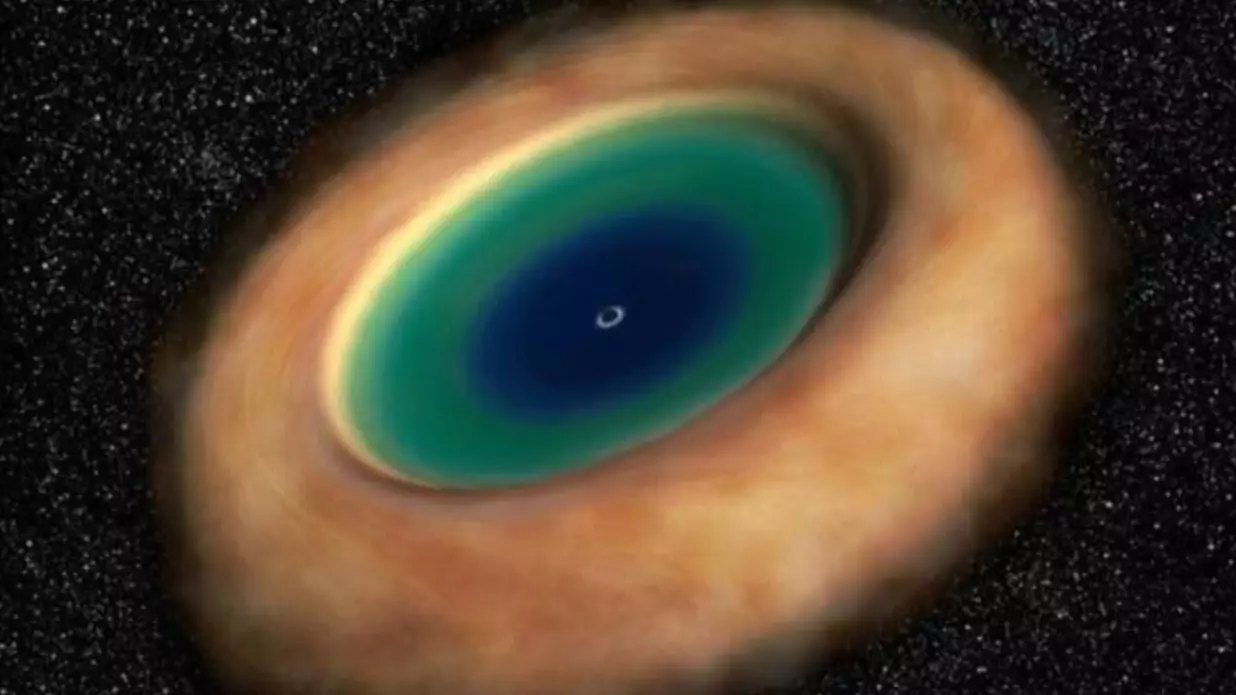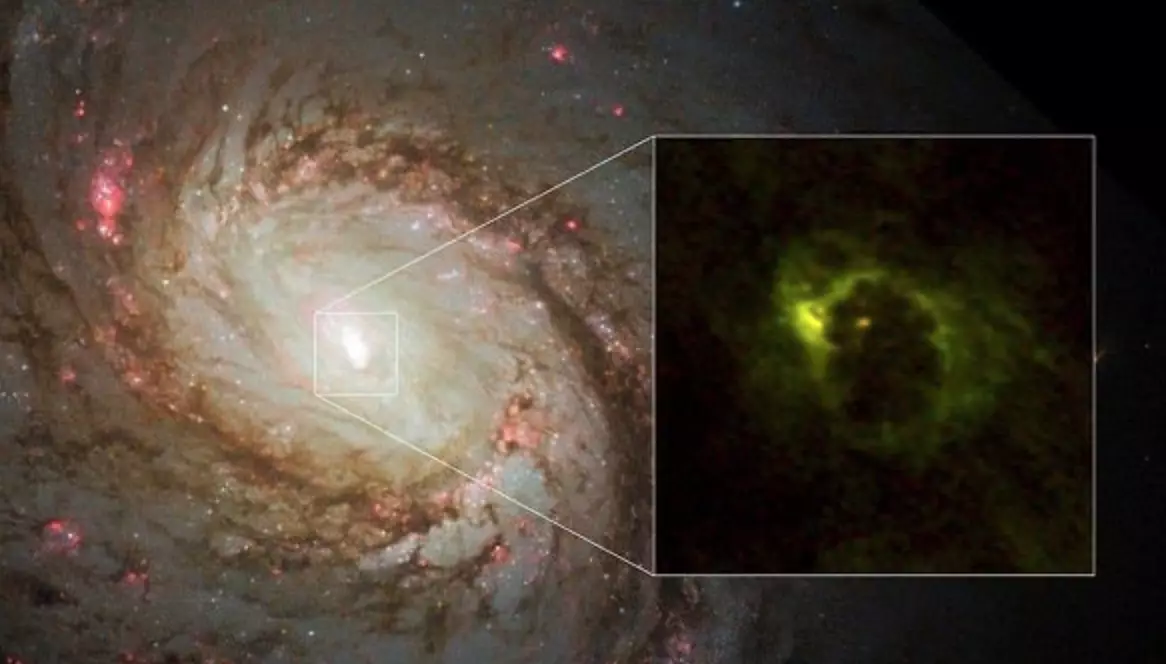
An amazing image showing a ring of dust and gas surrounding a supermassive black hole has been released.
The catchily-named Atacama Large Millimeter/submillimeter Array (ALMA) has managed to take the image of the black hole, which measures 40 light-years across, surrounded by the 'space-doughnut' at the centre of the spiral galaxy M77.

Scientists are hoping that by studying the phenomenon they can gain a better understanding about the formation of galaxies and the supermassive black holes at their cores.
A number of researchers, including some from the National Observatory of Japan, used ALMA, which is the world's most powerful land-based telescope, to learn more about the M77 and its black hole.
Scientists have previously discovered that the bigger the galaxy, the bigger the black hole at its centre. They also found that almost all galaxies have black holes at their core.
Advert
BLACK HOLE VIEW IF EARTH WAS IN THE CENTRE OF MILKY WAY
Using ALMA's powerful telescope the Japanese team were able to get high-resolution images of the centre of M77. The team found that the swirling cloud of gas - known as a torus - surrounds the black hole, something which scientists have theorised about for decades.
The central region of M77 has an 'active galactic nucleus' (AGN), which means that matter is falling towards the centre of the supermassive blackhole and sending out an intense light.
Masatoshi Imanishi, the study's lead author, said: "To interpret various observational features of AGNs, astronomers have assumed rotating donut-like structures of dusty gas around active supermassive black holes.
"This is called the 'unified model' of AGN. However, the dusty gaseous donut is very tiny in appearance. With the high resolution of Alma, now we can directly see the structure."

Commenting on the shape of the 'space donut', he said: "Previous observations have revealed the east-west elongation of the dusty gaseous torus.
"The dynamics revealed from our Alma data agrees exactly with the expected rotational orientation of the torus."
Advert
Due to 'asymmetry' the team reckon that it could mean the AGN had a 'violent history', which could include a merger with a smaller galaxy.
The full findings were published in The Astrophysical Journal Letters.
Featured Image Credit: Credit: ALMA/ESO/NAOJ/NRAOTopics: Science, Technology, space